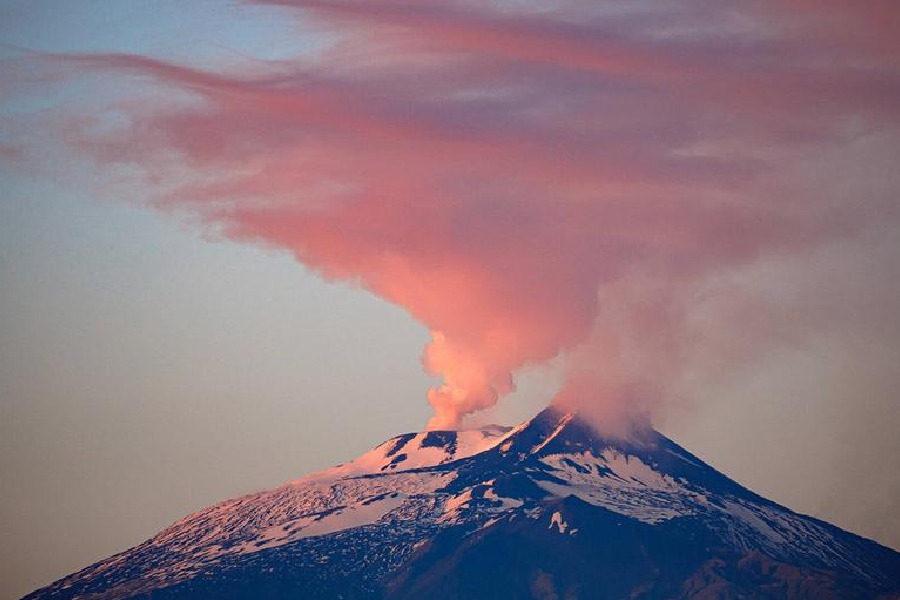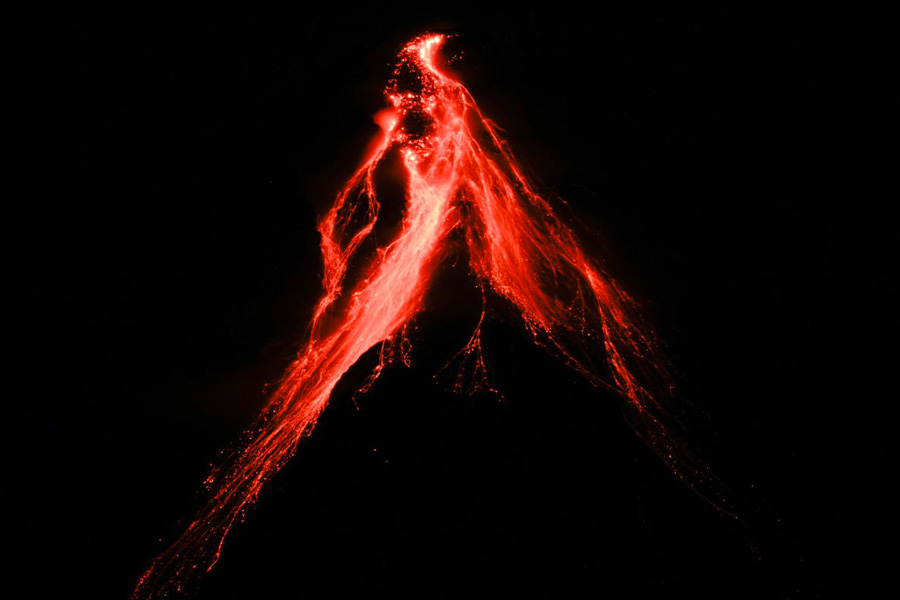News of volcanic eruptions only reaches the headlines when the big ones erupt — Etna, Kilauea, Mauna Loa, Merapi, or Eyjafjallajökull or Fagradalsfjall — but at any time during a given year, there may be as many as 50-80 fresh eruptions around the world.
Data from the Smithsonian Institution's Global Volcanism Program (GVP) suggests that to June 2023 there were 48 continuing volcano eruptions in the world. And a total of 56 volcanoes had erupted in the first six months of the year.
At the time of writing in August 2023, one of the world's most active volcanoes, Mount Etna, had started causing public concern again. But according to the same GVP data, Etna's starting erupting this time around in November 2022.
How long has Mount Etna been an active volcano?
Mount Etna is Europe's most active volcano and one of the largest in the world. Its recorded volcanic activity dates back to 1500 BCE. Since then it has erupted more than 200 times.
The current eruptions at Etna have caused cancellations of flights from nearby Catania airport.
The use of cars and motorbikes has also been banned for 48 hours due to high amounts of ash on the roads. Ash can be slippery and increases the risk of accidents.
Other volcanoes erupt for much longer than Etna
One of the most famous long-term eruptions was Kilauea volcano on Hawaii. Its 1983 spewing-spree continued — almost non-stop — for 35 years until 2018... only to start again in 2021. The eruption is still ongoing.
Dukono in Indonesia started erupting in August 1933 and is still continuing. Santa Maria in Guatemala started erupting in June 1922 and is continuing.
And Yasur in Vanuatu started erupting in about 1270 (± 110 years) and as of June 9, 2023, was continuing.

Someone documenting the lava surfacing on the Halema'uma'u crater of Kilauea volcano in Hawaii, U.S. January 5, 2023 Deutsche Welle
What is a volcano?
The US Geological Survey sums it up nicely: "Volcanoes are openings, or vents where lava, tephra (small rocks), and steam erupt onto the Earth's surface."
Volcanoes can be on land and in the ocean. They are in part a result of their own eruptions but also the general formation of our planet, as tectonic plates move.
Mountain ranges like the Andes in South America and the Rockies in North America, as well as volcanoes, formed through the movement and collision of tectonic plates.
There are four main types of volcanoes: cinder cones, composite or stratovolcanoes, shield volcanoes and lava domes.
Their type is determined by how the lava from an eruption flows and how that flow affects the volcano, and, as a result, how it affects its surrounding environment.
How do volcanoes erupt?
Essentially, it's a case of magma, or molten rock, below the surface of the Earth, bubbling up, rising and overflowing, like boiling milk out of a pot on a stove.
The magma finds its way to vents in the volcano and gets spewed across the land and into the atmosphere. When magma erupts from a volcano, it is called lava.
Volcanoes in the Pacific Ring of Fire
Some of the most active volcanoes are located in the Pacific Ring of Fire. About 90% of all earthquakes strike within the Ring of Fire.
Can scientists predict volcanic eruptions?
Scientists are capable of predicting volcanic eruptions hours, or sometimes several days, in advance. This isn't the case with earthquakes, which are much harder to predict.
Scientists use seismographic data from earthquakes and other tremors, because those can be a precursor to volcanic eruptions.
Scientists also monitor the ground for signs of deformation, which may be caused by the movement of magma. They also take readings of volcanic gas emissions, and changes in gravity and magnetic fields.











